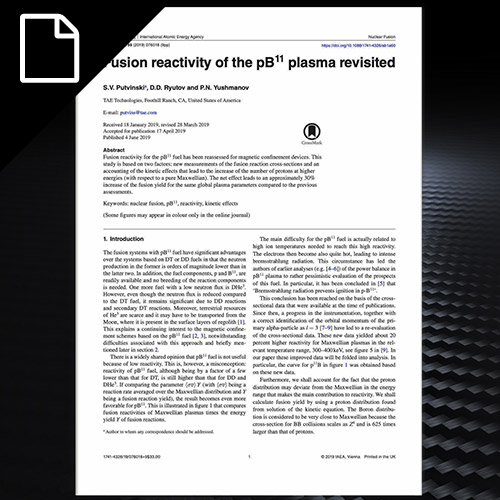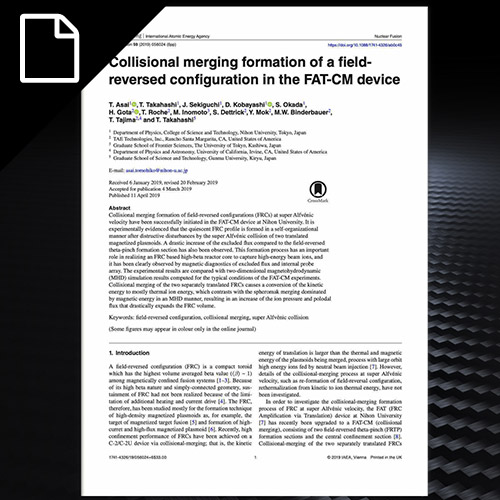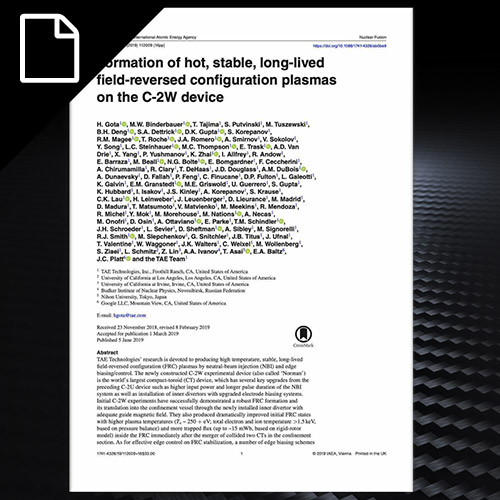
Jun 2019 | Research Library, Papers, Fusion Energy, Fusion Research, Fusion Science, Fusion Technology, Modeling, Plasma Research, Theory
June 2019 | S.V. Putvinski | Nuclear Fusion | Paper
Fusion reactivity for the pB11 fuel has been reassessed for magnetic confinement devices. This study is based on two factors: new measurements of the fusion reaction cross-sections and an accounting of the kinetic effects that lead to the increase of the number of protons at higher energies (with respect to a pure Maxwellian).

Jun 2019 | Research Library, Papers, Experiment, Formation, Fusion Energy, Fusion Research, Fusion Science, Fusion Technology, Plasma Research
June 2019 | T. Asai | Nuclear Fusion | Paper
Collisional merging formation of field-reversed configurations (FRCs) at super Alfvénic velocity have been successfully initiated in the FAT-CM device at Nihon University. It is experimentally evidenced that the quiescent FRC profile is formed in a self-organizational manner after distructive disturbances by the super Alfvénic collision of two translated magnetized plasmoids.
Jun 2019 | News
As CEO of TAE Technologies, the world’s largest private fusion reactor company, Michl Binderbauer is one of those who believes that fusion power could be on the near horizon – and is using artificial intelligence co-developed with Google to help make it a reality.

Jun 2019 | Research Library, Papers, Edge Control, Experiment, Formation, Fusion Energy, Fusion Research, Fusion Science, Fusion Technology, Overview, Performance, Plasma Research, Stability, Top Level
June 2019 | H. Gota | Nuclear Fusion | Paper
TAE Technologies’ research is devoted to producing high temperature, stable, long-lived field-reversed configuration (FRC) plasmas by neutral-beam injection (NBI) and edge biasing/control.


